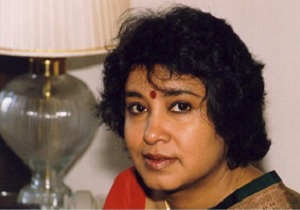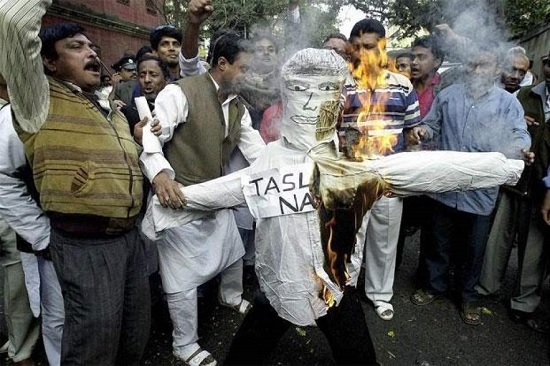Dec 07, 2025
Dec 07, 2025
by Rashmi Bajaj
 It might sound preposterous today but there was indeed a time when writing was considered to be an all-male prerogative and a woman was thought to be ‘genetically unsuited’ for literary production. As revealed in Robert Southey's famous letter to Charlotte Bronte , the bias in the West against women indulging in creative activity was very strong: “Literature is not the business of a women’s life and it can not be.’’ We have now come a very long way from the initial stage when women writers had to wage a long drawn-our battle for recognition of their literary talent. Our times are witness to opulent literary creativity by women litterateurs and recognition of their merit in the critical circles. Female texts, feminist criticismand a female literary tradition are the rage of the day. There is no gainsaying the truth that women-writing has now become a vital literary force and a very essential part of the contemporary literary scenario.
It might sound preposterous today but there was indeed a time when writing was considered to be an all-male prerogative and a woman was thought to be ‘genetically unsuited’ for literary production. As revealed in Robert Southey's famous letter to Charlotte Bronte , the bias in the West against women indulging in creative activity was very strong: “Literature is not the business of a women’s life and it can not be.’’ We have now come a very long way from the initial stage when women writers had to wage a long drawn-our battle for recognition of their literary talent. Our times are witness to opulent literary creativity by women litterateurs and recognition of their merit in the critical circles. Female texts, feminist criticismand a female literary tradition are the rage of the day. There is no gainsaying the truth that women-writing has now become a vital literary force and a very essential part of the contemporary literary scenario.
In “The Madwoman in the Attic” Sandra Gilbert and Susan Gubar set out to explore anew a “distinctively female literary tradition.” They underline the single thread running trough’ the female creativity:
“The striking coherence we noticed in literature by women could be explained by a common female impulse to struggle free from social and literary confinement through strategic redefinitions of the self, art, and society.”
English language has turned out to be a very powerful global tool in the hands of the women writers to reassess and redefine women, but also the women’s writing in English in several national traditions including African, American, Asian, Australian, Canadian, Caribbean, New Zealand, South Pacific and the British Isles. South-Asian women writers, especially novelists, have made their presence felt in the international scenario. Endowed with international and national awards and accolades, these women novelists have carved a real distinguished niche for themselves on the international map. The catalogue of such prominent writers from India, Pakistan, Sri Lanka and Bangladesh is indeed a long one. However, no survey of the present day women writing would be complete if it fails to take note of the writings of Taslima Nasreen,the most prominent South-Asian writer of contemporary literature.
As far as the theme of Taslima’s works is concerned, she is undoubtedly a feministand also a secular humanist writer, but with a difference. She initiates a break with the tradition of Bangladeshi literature. The literature of Bangladesh has a tradition of celebrating the self- sacrificing womanhood but Taslima does not commend such renunciation. In fact, her writings display a dissociation of womanhood from the ideal of self-sacrifice.
The central thread which runs through her writings is her own experience as a “woman” and as a “Muslim“. These two strands are, at times, woven together to present her perspective. Sometimes she is a doctor looking at a patient who has been intimidated by her husband into an abortion and sometimes she is a member of an intellectual group encountering blind faith in religion. In her works, these two themes are treated with dexterity and a keen awareness of complexity. Taslima’s fiction embodies a quest for meaning and identity being carried out by her various protagonists. There is little stability of background in Taslima’s own life and this also accounts for the fact that identity-crisis and quest for identity tend to become a major preoccupation with her. Her characters are projected as persistently struggling with their conflicting selves and the environment. Perusal of Taslima Nasrin’s novels leads us to conclude that her writing is much more than a mere cathartic exercise in self-expression. Herein various characters grapple with multiple identity-crises and seek to resolve the crisis in their own possible ways.
In her much controversial novel Lajja, (Shame)the major emphasis is on the crisis related to national-identity, social-identity and gender-identity. Taslima gradually seems to widen the scope of her vision from the immediate surroundings to the universal level in her later novels. The characters of her novels are in search of their multiple identities.
Lajja is a venture of the novelist’s early days and the writer herein concentrates mainly upon her immediate surroundings. Dutta family has lived in Bangladesh all their life. The demolition of Babri Masjidat Ayodhya proves to be a catastrophe and the aftermath of this incident is felt in the worst form by the Hindus of Bangladesh. Each of the characters has his/her own reaction towards the events taking place around him/her. This novel dwells not only on the individual identity crisis but also the collective identity crisis of all the Hindus staying in Bangladesh.
The tale of Duttas is a representative case delineating how minority Citizens lose the wholeness of their identity and sometimes their lives in communally charged atmosphere. The quest for national and social identity is common for all theHindus staying in Bangladesh. Their country does not accept them as equivalent citizens of Bangladesh because of their minority-religion and the neighbouring country treats them as refugees because they have taken refuge in a foreign country. Their identity in their own country is of a Hindu i.e. a religious one and in the foreign country that of a Bangladeshi refugee i.e. a national one. Practically there is no place in the world where they can enjoy the richness of their ‘Being’. Those who decide to stay in their own motherland are coerced to convert to Islam. Their children have to study Muslim religious scriptures and offer their prayers according to Muslim rituals which endanger their religious identity. Discrimination introduced into the constitution itself proves to be a major threat to the social identity of the Hindus in the country. Neither are they entitled to get good jobs nor can they set up their own trade without a Muslim partner.
As far as the individual quest for identity is concerned, Sudhamoy and Suranjan are sailing in the same boat. Both of them are secular humanists, idealists and followers of Marx . All their life, they have struggled to uplift their country without any vested interest. This patriotic foundation of their identity crumbles when they see their country burning in the communal fire. The overwhelming question for them is: “Was (their) only identity that of a Hindu? Did religion supersede nation and nationality?” (176). The only difference is that the idealism of Suranjan is shattered earlier than his father as he keeps moving in the religiously charged atmosphere of the country. The entire identity of Suranjan gets eroded in this poisonous atmosphere:
….. “I too want choppers, daggers and pistols in my hands. I want thick rods. Didn’t they go and piss on the ruins of amandir in old Dhaka? I also want to piss on their mosques” (164)
Blurts Suranjan and then confesses:
Yes, I’m becoming communal, I am becoming
communal …………..So what?”
His painful realization is:
The more we love the people of this country, the more they will isolate us. (213)
His inadvertent transition to a communal Hindu suffocates him and he pleads with his father to move away to India.
However,Sudhamoy’s disillusionment takes place only at the end of the novel when he is left with nothing to lose. Long before these riots, he had lost in Mymensingh all his assets and also his manhood. Now his new residence is devastated, his daughter is abducted and then murdered. No aspect of his identity remains unjeopardized. In its quest for a wholesome identity the family finally decides to forsake this motherland and migrate to India:
Sudhamoy said, ‘come, let’s go away’. Suranjan could not conceal his surprise.
‘Where will we go, Baba?’ he asked.
‘India’ – And his voice cracked as the shame swept over him”
Taslima rebels:
“Lajja is not a product of my sudden emotions, but the story of defeat of all of us. Lajja is everyone’s sadness…. When religion becomes more important than humanity I feel responsibility to protest … Lajja is a protest “
The women characters of the novel react to these conditions in their own way. Kironmoyee seems to be eternally silenced by her circumstances. She responds to her situation neither idealistically like her husband nor communally like her son. She is realistic enough to mould herself according to the demands of her surroundings for her survival. Her gender _identity overshadows her human identity and makes her suffer all through her life because of the roles prescribed by the society. She remains “feminine” by complying with the idealistic whims of her husband. After the mutilation of her husband’s genitals, she is also deprived of her sex-life. Her identity-crisis is very intense as she does not even know how to express her grief:
“Was she made of stone that she did not react to anything at all? Did she have nothing to oppose? How strange she was – unresponsive, unrelenting and as unemotional as a corpse.” (194).
Through Kironmoyee’s character, the author has projected the universal gender-generated Identity crisis of women. .
Maya, the daughter of the family, is a victim of identity crisis from the early childhood. She does not belong to any religion as she takes more interest in Muslim rituals and does not feel herself to be a Hindu. Her quest comes to an end before it could begin as she is not allowed to live a wholesome life.
However ,these women characters do not rebel or protest against any atrocities or discrimination faced by them as they are in the midst of a mega-scale tragedy where larger Issues are at stake and such finer notions of gender-equality and respect become meaningless in the face of all-around barbarism.
Including Lajja, The novels of Taslima Nasrin focus on a crisis which is not so much an internal crisis of a divided self but the crisis caused by external forces like gender,religion and race. Herein the identity crisis or quest for identity does not have any metaphysical or philosophical dimensions. Insights into higher truths of life and existence are neither sought not attained.Disillusioned with religion that divides and creates contempt, Taslima’s characters challenge the cramping impact of religion and reveal irreverence towards God and religious practices.Her religion ishumanitarianism and for her human values are much more important than any hatred¬generating traditional religion.
In her novels Taslima Narseen has done a commendable job of portraying the various facets of identity crisis that our times and people are familiar with. Her readers can very well empathize with the communal, religious, cultural, racial and gender-generated crisis she dwells upon. Her work, aimed at “consciousness-raising” well achieves its purpose. It is an ‘Act of Courage’where she challenges various unjust dominating forces and jolts the readers out of their complacency.

06-Jul-2019
More by : Rashmi Bajaj